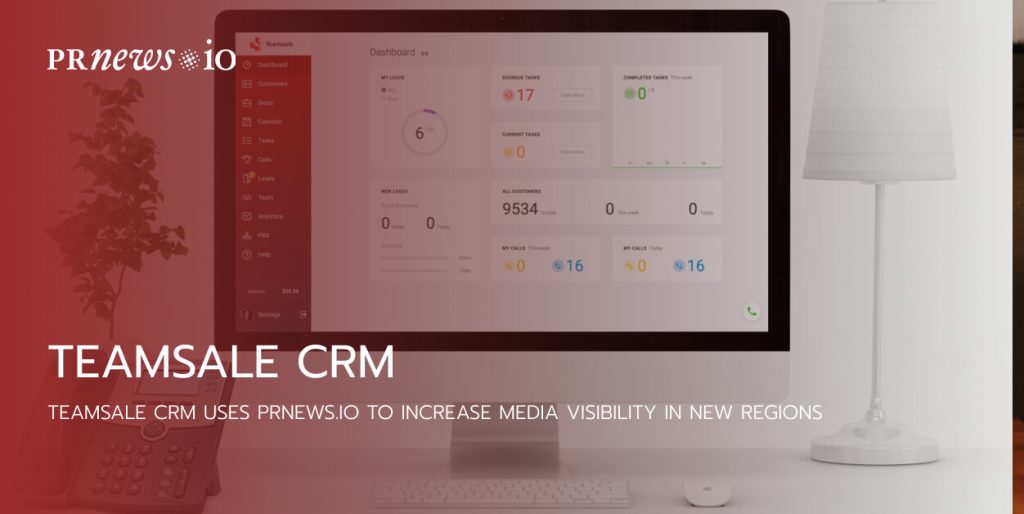Marketers and PR managers often handle things in chaos. Projects, promotional ideas, and tasks appear everywhere – in team members’ minds, in notebooks, on sticky notes, in emails, and on whiteboards. It’s almost impossible to realize a successful marketing strategy in such a fragmentary, messed-up manner. There’s a solution: a single, centralized marketing calendar to manage all your marketing plans. It is an essential part of any marketing department daily processes. An effective, efficient, and responsive marketing calendar will help you follow up of all the upcoming campaigns, sales and promotions, enabling you to meet every deadline and ensuring your department and company make progress during the year.
But if you don’t know how to create a marketing calendar, you may experience difficulties using it productively. Here is an ultimate guide on how to create the best marketing calendar template for your future marketing activities.
What is a Marketing Calendar?
A marketing calendar is an instrument for planning and organizing your marketing tactics in one place. It’s an illustrative handbook for all your marketing plans.
A marketing calendar gives the answers to questions like:
- What marketing projects are we planning? The calendar may include big product launches, weekly newsletters, social media campaigns, offers, and more.
- Who is responsible for each project and task? It’s very helpful to put an appropriate expert in charge there.
- What is the deadline for your projects? No more panic in the final days before the sale. The monthly social media marketing calendar will allow you to plan in advance and deliver a great job on time.
Why a Marketing Calendar is so Important?
A marketing calendar is necessary for all your marketing work because it demonstrates important marketing activities and doesn’t allow them to be lost in the сhaos of the working days. A content marketing calendar allows marketers to see and control scheduled marketing activities in short and make sure they are going right according to a plan for the smaller milestones required during the year.
Creating a marketing calendar is a necessary working stage in a marketing team and should be reviewed regularly. While it can take significant time and effort that requires significant deliberation, it is very important for a marketing team to spend time planning campaigns in advance. Of course, it’s very hard to create and plan all marketing campaigns a year in advance. But a month or quarter calendar will allow all members of a marketing team to follow the adopted plan, see who is responsible for the particular campaign or part of work, and do not miss any idea.
Content Marketing Platform
- 100,000+ media publications;
- get backlinks to your product;
- scale work with content distribution.
What Functionality Does a Marketing Calendar Have?
While a marketing calendar may seem simple enough at first glance, a truly useful marketing calendar goes far beyond a simple shared Excel doc. A marketing calendar should have high functionality, from the ability to synchronize across many colleagues, as well as the ability to integrate automatic updates through email, e.g.
A great marketing calendar should have the next features:
- Syncable: One of the most critical features of a marketing events calendar is that it syncs automatically when somebody’s correcting it. So that all team members, using any type of device, can use and see the most updated version any time.
- Multiple and customizable formats: Even one marketing department will likely have several (if not more) calendars working at the same time to make changes there across different platforms. An ability to use it across multiple calendars is crucial.
- Google Calendar integration: The possibility to add Google Calendar events directly into your marketing calendar can save time and make it much easier to merge many other team calendars.
- Filterable categories: For smaller teams, start-up marketing teams, or agency marketing departments, creating a focused view is helpful as they often handle all aspects of the marketing strategy in one team. Filtering by category would allow a marketing team to follow and manage all of the marketing activities in short or check all of the content scheduled without messing up with other categories.
- Ease of use: All in all, marketing calendars should be easy-to-use for all people and not only for technology experts. If a marketing calendar isn’t easy to use for all team members, it won’t be helpful and popular among them.
What Does a Marketing Calendar Look Like?
Marketing calendars can be adopted in many directions and formats. Here are a few moments to consider:
- Trello and similar marketing calendar apps. It would be great if you can adopt and share your marketing calendar with the content or other apps your team is using. It’d be flexible and easy to implement.
- Spreadsheets. A great way to have your marketing calendar online without specialized marketing platforms.
- Printable calendars. Printable PDF calendars are also a great way to start planning and realizing your marketing projects together. As your team increases, later you’ll probably want to create an online version to share the calendar and modify it with ease.
- Google Calendar. You can also create a content calendar in Google Calendar with color-coding for different projects.
Your marketing calendar may be a digital demonstration of all your ongoing campaigns, tasks that needs to realize, deadlines, formats, and potential issues.
How to Create a Marketing Calendar?
Creating a marketing calendar every month or quarter may be a time-consuming task, but worth it as the calendar helps the marketing teams follow the plan and achieve their goals month by month. One of the most effective ways to schedule posts to several social channels is to use the best social media management tools. They allow you to schedule many posts at once and choose a suitable frequency of posting.
Here are the steps for building a marketing calendar:
Think over your marketing plan and plot accordingly: The marketing plan should have detailed information on activities, campaigns, and events needed to realize your marketing ideas and strategy. The first step in creating your marketing calendar is to choose the needed actions.
Determine key dates and events in your marketing calendar: Next, you’ll need to identify deadlines and campaigns. Next, to add them to the marketing calendar, pointing out the deadlines of the projects to ensure a detailed schedule for the quarter or year.
Identify the team members included: Choose and point out the team members responsible for each task. To ensure the marketing calendar is complete, ask the marketing leads to fill it with priority dates and planned campaigns.
Choose event frequency: Building a marketing calendar will allow you to envisage the periods of marketing activities more clearly, organizing social media posts, blogs, eBook releases, or other content marketing to not attack the audience chaotically or leave them expecting content more.
What to Include to a Marketing Calendar?
Before you start brainstorming and scheduling your promotional and awareness posts, ensure you have the general goals of your content figured out. This will bring you back to thinking about your brand targets: what matters to your company, what matters to your audience, and what pains you want to solve with your product or service.
Choosing what to include in a marketing calendar is rather simple: all marketing activities for realizing strategy should be covered in a marketing calendar. Here are the elements of what has to be included in a marketing calendar:
Planned social media posts to support marketing activities and trends: For example, a brand knows they’d likely promote a CyberMonday offer with a post on Instagram, so they would put the planned post date and activity onto the marketing calendar in advance so they could be prepared beforehand.
Key dates for the marketing team: Dates like eBook release days, the company’s podcast, webinars, a start day of a new campaign, or a product launch would all be important to add to a marketing calendar to keep the entire team acknowledged.
Content and editorial scheduling: Marketing calendars should also cover specific deadlines for content and editorial activities within a brand, including dates for approval needed ahead of the content publication.
The metrics you want to boost: Follower count, engagement, conversions, etc.
Marketing Calendar’s Examples
Crowd’s Content Calendar
SoCrowd’s social media content calendar is clear and concise, allowing all of their channels to be taken in at a glance—covering their plan.
Hootsuite’s Internal Social Media Calendar
An example of the content calendar from Hootsuite, where their social media team gathers all plans in Google Sheets.
Source: Hootsuite
Marketing Tools for Creating Marketing Calendar
Marketing calendar tools save time for collaboration work and workflow tracking.
1. Airtable
This is a cloud-based collaboration platform to manage projects the way you like. It keeps your team covered and monitors workflow from content creation to posting it. So, you can get some help and create new tasks for authors according to their status. Besides, this software integrates with most of the apps you use.
Price: Free to use
2. CoSchedule
CoSchedule is an all-in-one marketing service that manages all your marketing activities. You can share weekly calendars with your entire team and determine who’s working on each project. Also, it allows you to create cross-functional schedules and present to you the progress of each task. So, you can set your target and approach the issues to complete the tasks on time.
Price:
- Free to use
- Business/Agency plan: $80 per month
Markodojo
Markodojo is a marketing management tool that improves your team’s productivity. You can create marketing calendars with a friendly-to-use interface and visualize tasks. Also, it allows you to leave comments in the documents and share them with your team. So you can highlight specific details and improve them with your team.
Price: Free to use
Trello + Slack
This mix will help you organize and track your daily work. If you have already used these platforms, why not use them for marketing calendar use? You can use these apps to map and monitor your workflows and Slack to share with your team.
Price: Free to use
To Sum Up
You’re ready to create a marketing strategy and realize it. No complicated settings or confusing strategy plans in your drafts—just an action plan you can begin any time you want. A marketing calendar is a must-have tool for realizing marketing campaigns and providing your marketing department with data on what’s going on. Forward planning repays when your campaigns are focused on users and results, with the right balance of channels and campaign types.
Read more: What Is Paid, Owned & Earned Media
FAQ: marketing calendar
How to create a marketing calendar?
Creating a content marketing calendar you have to build a centralized workspace where your whole marketing team can work together on workflows of the projects, so you can move from strategy to execution without a hitch.There are eight steps to building an effective social media calendar:
- Make an audit your social networks and content.
- Choose your social accounts.
- Decide what your calendar needs to reflect.
- Make a content base for your assets.
- Set a workflow.
- Start creating your posts.
- Show it to your team to review, and use their feedback to correct.
- Start posting/scheduling.
What is a marketing calendar?
A marketing calendar is a prepared schedule of your marketing activity over a particular period. High-level marketing calendars may be used over a year, whereas low-level calendars may show forthcoming weekly and monthly marketing calendars. Your marketing schedule will cover all information about upcoming marketing initiatives. This may include details on tasks that need to be completed, responsible team members involved, deadlines, budget information, and distribution platforms.
What is a content marketing calendar?
Here is a detailed explanation and guide on What is a Content Calendar in 2021 & How to Create It: Templates, Tools, Ideas





